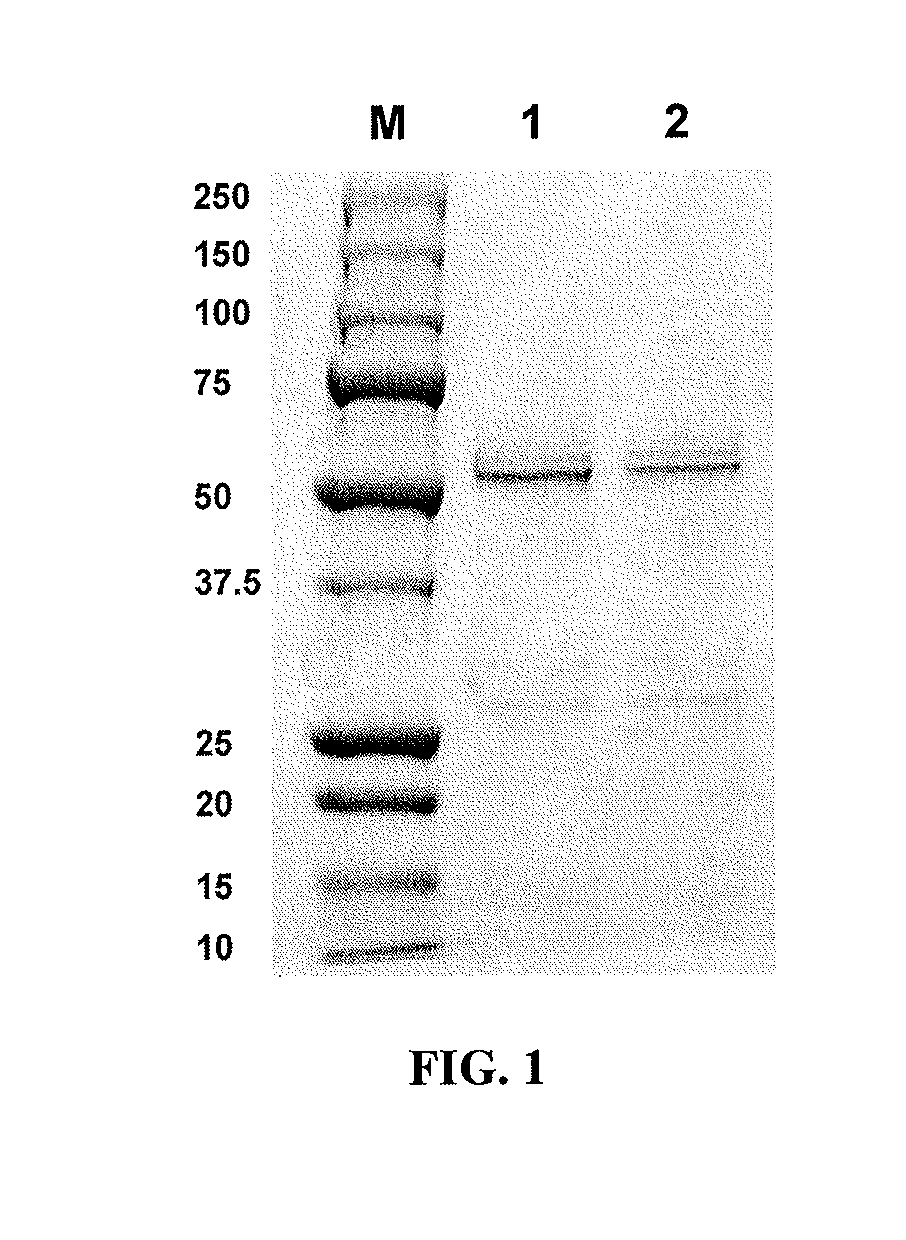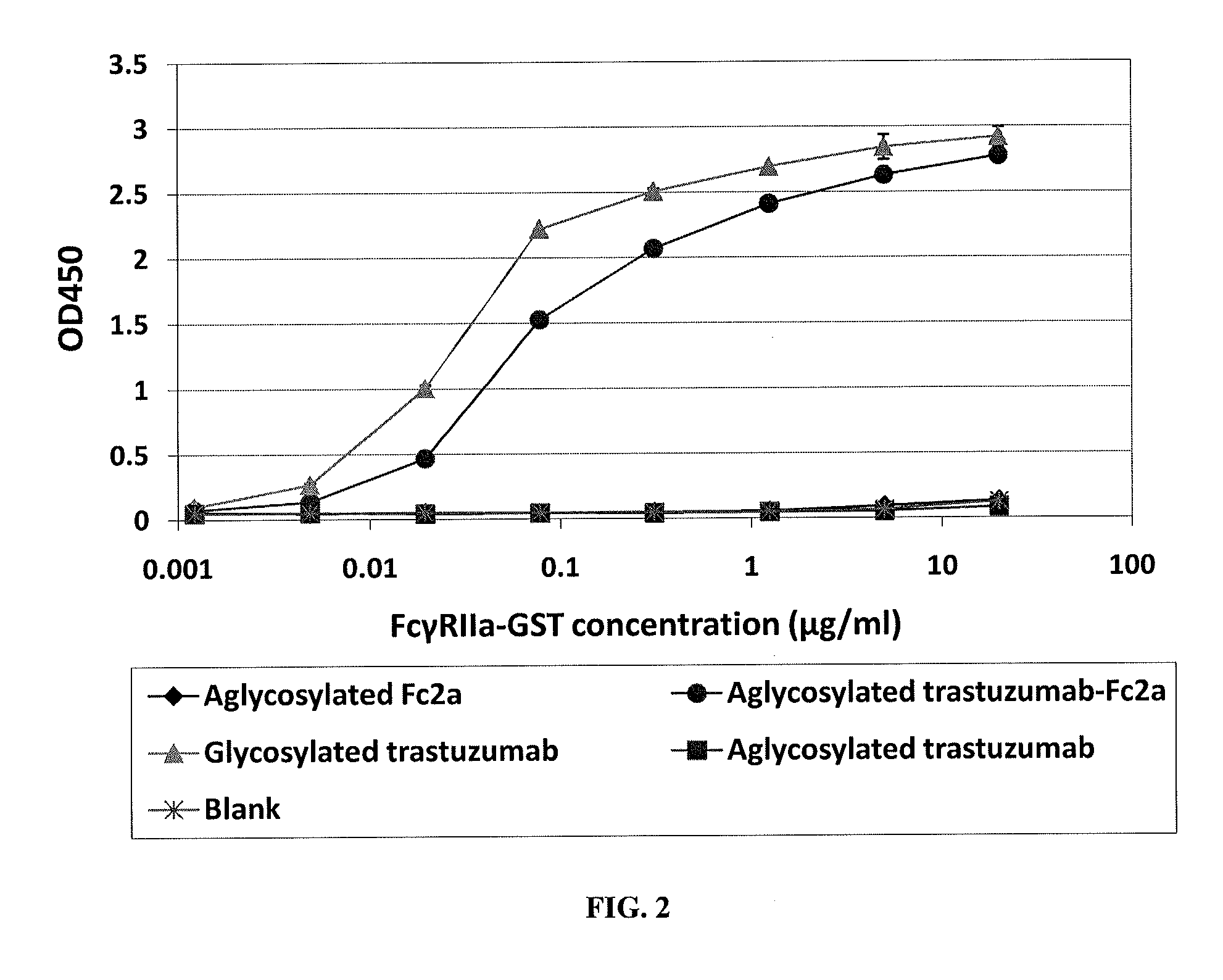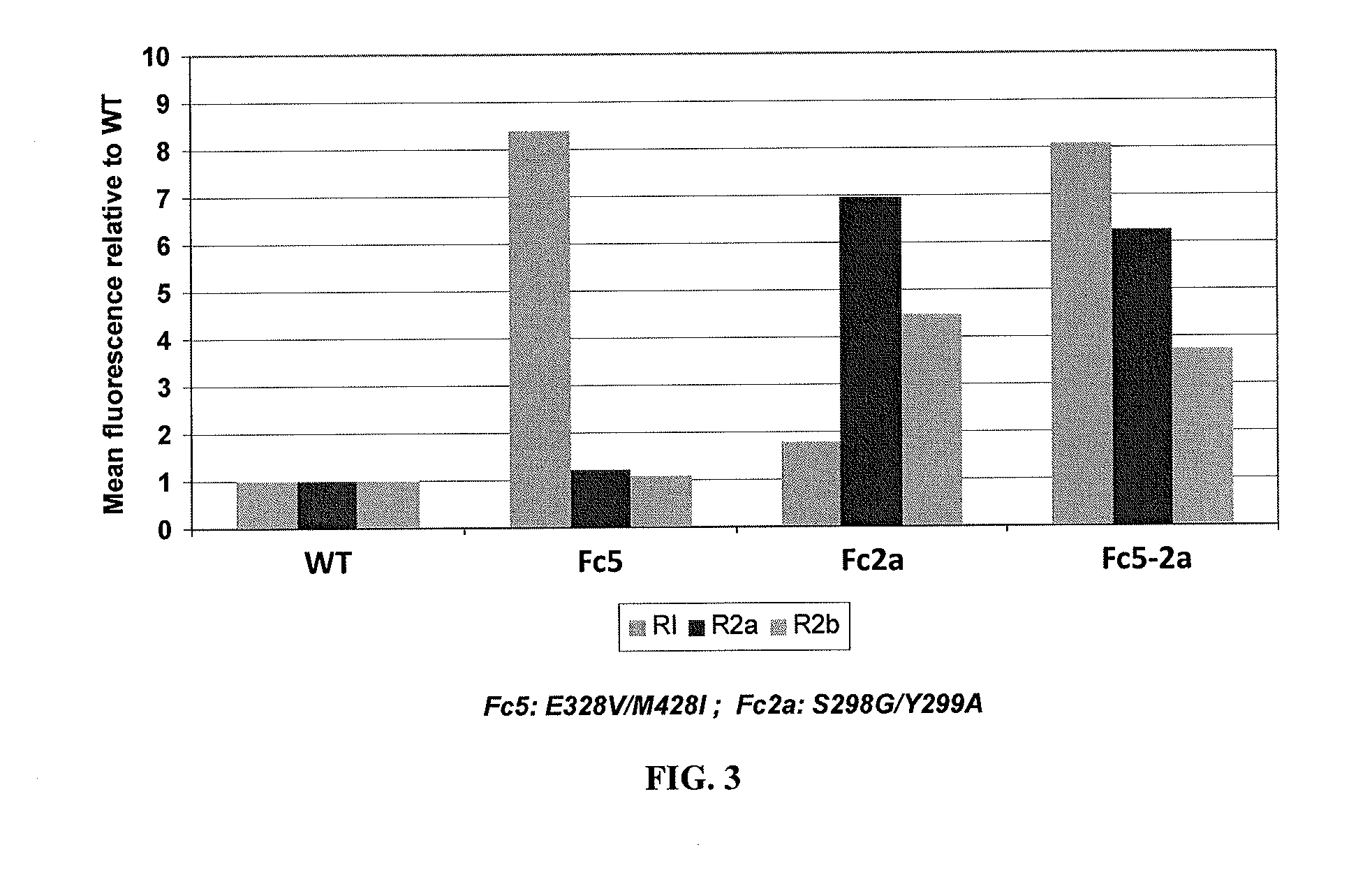Engineered immunoglobulin fc polypeptides
a technology of immunoglobulin and polypeptides, applied in the field of protein engineering, can solve the problems of lack of efficacy and rapid clearance due to patient production of human anti-mouse antibodies (hama), time and cost consuming related to the technology, and inability to elicit ad
- Summary
- Abstract
- Description
- Claims
- Application Information
AI Technical Summary
Benefits of technology
Problems solved by technology
Method used
Image
Examples
example 1
Soluble Expression and Purification of Homodimeric Wild Type Fc and Fc2a Fragments
[0174]All primers and plasmids used in this work are described in Table 1 and Table 2. Fc2a, containing two mutations (S298G / T299A) in the C′E loop of CH2 region, is an aglycosylated Fc domain engineered for binding to the FcγRII family (Sazinsky et al, 2008). It was reported that aglycosylated Fc2a displayed binding affinity to FcγRIIa and FcγRIIb similar to that of wild type glycosylated IgG (Sazinsky et al, 2008). For the soluble expression and secretion of correctly assembled homodimeric Fc fragments (wild type Fc and Fc2a), two plasmids (pDsbA-Fc-FLAG and pDsbA-Fc2a-FLAG) were constructed. pDsbA was generated by digestion of pTrc99A (Amersham Pharmacia) with SalI and FatI restriction endonucleases (compatible with the NcoI) followed by ligation with a synthetic 53 by DsbA signal peptide gene. The parental Fc genes were PCR amplified using the primers STJ#144 and STJ#145, ligated into the pDsbA pla...
example 2
Production and Purification of Full Length Aglycosylated Trastuzumab and Aglycosylated Trastuzumab-Fc2a
[0176]For the construction of pSTJ4-Herceptin IgG1-Fc2a, the Fc2a gene was amplified using primers STJ#290 and STJ#291 with pDsbA-Fc2a-FLAG as a template. The amplified PCR fragments were ligated into SalI / EcoRV digested pSTJ4-Herceptin IgG1 (Jung et al, 2010) to generate pSTJ4-Herceptin IgG1-Fc2a. Each of the plasmids for the expression of full length IgG wild type trastuzumab and mutant trastuzumab-Fc2a are designed to be controlled by a lac promoter in a dicistronic operon with N-terminal PelB leader peptide fusions to both heavy and light chains.
[0177]E. coli BL21(DE3) (EMD Chemicals, Gibbstown, N.J.) transformed with the full length IgG expression plasmids were grown in LB complex medium and then sub-cultured overnight in R / 2 medium (Jeong & Lee, 2003). The sub-culture was repeated twice for adaptation in the R / 2 defined medium. E. coli BL21(DE3) harboring pSTJ4-Herceptin-IgG1...
example 3
ELISA Analysis for Fc2a and Full Length Aglycosylated Trastuzumab-Fc2a
[0179]For homodimeric aglycosylated Fc2a (Fc fragments) or aglycosylated trastuzumab-Fc2a (full length IgG), binding affinity to FcγRIIa-GST was analyzed by ELISA. 50 μl of 4 μg / ml of aglycosylated trastuzumab, aglycosylated trastuzumab-Fc2a, or clinical grade glycosylated IgG trastuzumab diluted in 0.05 M Na2CO3 buffer (pH 9.6) were coated on 96 well polystyrene ELISA plates (Corning, Corning, N.Y.) by incubating for 16 hr at 4° C. After blocking of the plates with 1×PBS (pH 7.4), 0.5% BSA for 2 hr at room temperature, washing four times with PBS containing 0.05% Tween20 (PBST), incubation with serially diluted FcγRIIa-GST (Berntzen et al, 2005) at room temperature for 1 hour, and four more PBST washes, 1:5,000 diluted anti-GST antibody HRP conjugate (Amersham Pharmacia, Piscataway, N.J.) was added to the plates. Following another four washes, the plates were developed using Ultra-TMB substrate (Pierce, Rockford,...
PUM
| Property | Measurement | Unit |
|---|---|---|
| equilibrium dissociation constant | aaaaa | aaaaa |
| sub-physiological temperature | aaaaa | aaaaa |
| volume | aaaaa | aaaaa |
Abstract
Description
Claims
Application Information
 Login to View More
Login to View More - R&D
- Intellectual Property
- Life Sciences
- Materials
- Tech Scout
- Unparalleled Data Quality
- Higher Quality Content
- 60% Fewer Hallucinations
Browse by: Latest US Patents, China's latest patents, Technical Efficacy Thesaurus, Application Domain, Technology Topic, Popular Technical Reports.
© 2025 PatSnap. All rights reserved.Legal|Privacy policy|Modern Slavery Act Transparency Statement|Sitemap|About US| Contact US: help@patsnap.com



